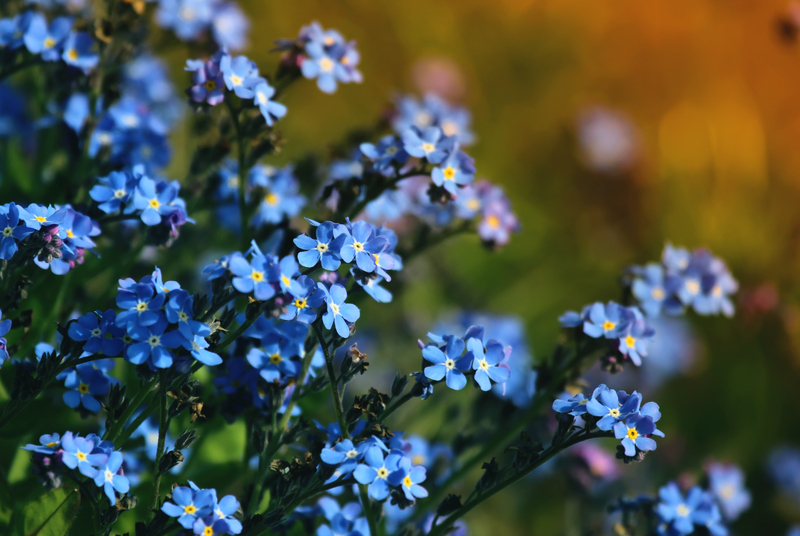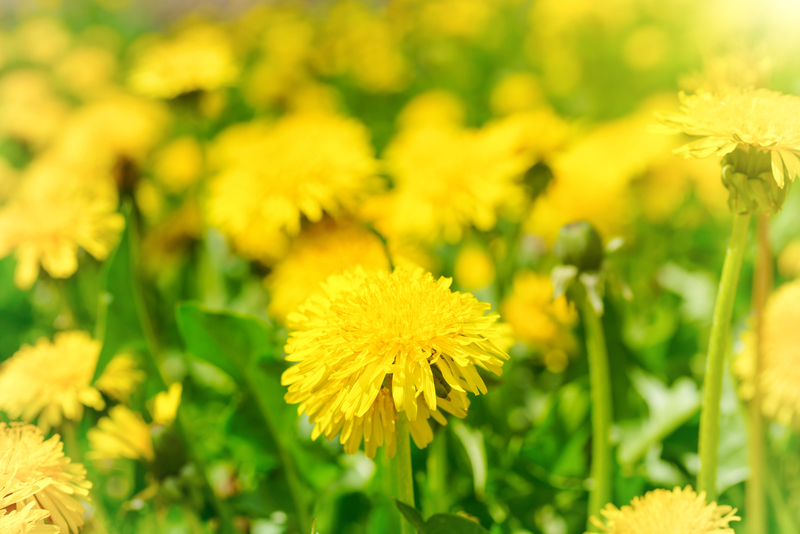Understanding Sustainable Gardening
Posted on 22/01/2025
Gardening has long been a popular pastime, offering serenity and a connection to nature. However, conventional practices can sometimes strain natural resources and contribute to environmental degradation. Sustainable gardening provides a way to create beautiful and productive gardens while promoting ecological balance. This comprehensive guide will explore sustainable gardening practices, their benefits, and how you can incorporate them into your own gardening routine.
What is Sustainable Gardening?
Sustainable gardening is the practice of creating gardens that are in harmony with local ecosystems and that promote environmental health. It focuses on reducing the need for chemical interventions, conserving water, enhancing soil health, and supporting biodiversity. The goal is to create a self-sustaining cycle that minimizes waste and maximizes productivity.

The Principles of Sustainable Gardening
There are several key principles that underpin sustainable gardening. Understanding these principles will help you develop practices that contribute to a healthier environment.
1. Soil Health
Healthy soil is the foundation of any successful garden. Sustainable gardening emphasizes the importance of maintaining and enhancing soil structure and fertility. This can be achieved through practices such as composting, using organic mulch, and avoiding synthetic fertilizers and pesticides.
2. Water Conservation
Efficient use of water is critical in sustainable gardening. Techniques like rainwater harvesting, drip irrigation, and selecting drought-resistant plants help conserve this valuable resource. Mulching and soil improvement also play a significant role in reducing water evaporation and ensuring that plants receive adequate moisture.
3. Biodiversity
Promoting biodiversity involves growing a diverse range of plants, which supports a variety of wildlife, including beneficial insects and pollinators. This approach creates a balanced ecosystem and reduces the likelihood of pest outbreaks.
4. Native Plants
Using native plants in your garden can significantly enhance sustainability. Native plants are well-adapted to local climate and soil conditions, requiring less water and care. They also provide essential habitat for native wildlife.
5. Resource Use and Recycling
Sustainable gardeners are mindful of the resources they use and aim to minimize waste. Practices such as composting kitchen scraps, reusing garden materials, and avoiding single-use plastics contribute to a more sustainable gardening approach.
Benefits of Sustainable Gardening
Sustainable gardening practices offer a multitude of benefits, not only for the environment but also for gardeners themselves.
1. Environmental Benefits
By reducing reliance on chemical inputs and promoting biodiversity, sustainable gardening helps protect soil health, water quality, and local ecosystems. It also contributes to carbon sequestration, as healthy plants and soil store carbon dioxide, helping to mitigate climate change.
2. Economic Benefits
Sustainable gardening can reduce costs associated with water, fertilizers, and pest control. By creating a self-sustaining garden, you lessen the need for external resources. Additionally, growing your own fruits, vegetables, and herbs can lower grocery bills.
3. Health Benefits
Gardening itself is a physical activity that promotes well-being. Using fewer chemicals and growing your own organic produce ensures that the food you consume is healthier and free from harmful substances. The act of gardening also offers mental health benefits, providing a sense of accomplishment and reducing stress.
4. Social Benefits
Sustainable gardening can foster community engagement and education. Sharing knowledge, seeds, and produce with neighbors encourages a sense of community and can inspire others to adopt sustainable practices.
Implementing Sustainable Gardening Practices
Transitioning to sustainable gardening may seem daunting, but even small changes can make a significant impact. Here are some practical steps to get started:
1. Composting
Create a compost bin to convert kitchen scraps and garden waste into nutrient-rich compost. This reduces landfill waste and enhances soil health. Composting is an essential part of sustainable gardening, turning organic waste into valuable material for your garden.
2. Mulching
Apply a layer of organic mulch, such as wood chips or straw, around plants. Mulch helps retain soil moisture, suppress weeds, and improve soil fertility as it decomposes. Regular mulching is a simple yet effective way to practice sustainable gardening.
3. Water-Wise Techniques
Install rain barrels to collect and store rainwater for garden use. Consider using drip irrigation systems that deliver water directly to plant roots, reducing evaporation and water waste. Water-wise gardening is crucial for conserving this precious resource.
4. Plant Selection
Choose native and drought-resistant plants that are adapted to your local climate. These plants typically require less water and are more resilient to pests and diseases. Diversifying plant species in your garden also promotes biodiversity.
5. Natural Pest Control
Encourage beneficial insects, such as ladybugs and bees, by planting flowering plants and providing habitats. Use physical barriers, like row covers, and employ organic pest control methods when necessary. Avoiding synthetic pesticides is key to maintaining a healthy garden ecosystem.
6. Soil Improvement
Regularly add organic matter, such as compost or aged manure, to improve soil structure and fertility. Perform soil tests to understand nutrient levels and pH, making adjustments as needed to optimize soil health.

Challenges and Solutions in Sustainable Gardening
Like any gardening practice, sustainability comes with its own set of challenges. However, understanding these challenges and finding solutions can lead to a more rewarding gardening experience.
1. Initial Investment
Some sustainable gardening practices, like installing drip irrigation systems or purchasing compost bins, require an initial investment. However, these costs are often offset by long-term savings and environmental benefits.
2. Pest Management
Without synthetic pesticides, managing pests can be more challenging. Integrating multiple pest control strategies, such as companion planting, promoting beneficial insects, and using physical barriers, can create an effective and eco-friendly pest management system.
3. Knowledge and Education
Sustainable gardening requires a certain level of knowledge about local ecosystems, soil health, and plant care. Resources such as gardening books, workshops, and online courses can provide valuable information. Community gardens and local gardening groups are also great sources of support and knowledge sharing.
Conclusion
Sustainable gardening is more than just a trend; it is a meaningful shift towards harmonizing our gardening practices with the natural world. By focusing on soil health, water conservation, biodiversity, and mindful resource use, we can create gardens that are not only beautiful and productive but also beneficial to the environment. Whether you are a seasoned gardener or a novice, incorporating sustainable practices can lead to a more fulfilling and eco-friendly gardening experience.
Embrace sustainable gardening and discover the joys of nurturing a garden that supports the health of the planet and all its inhabitants. The journey towards sustainability in your garden is a step towards a greener, more resilient future for generations to come.



